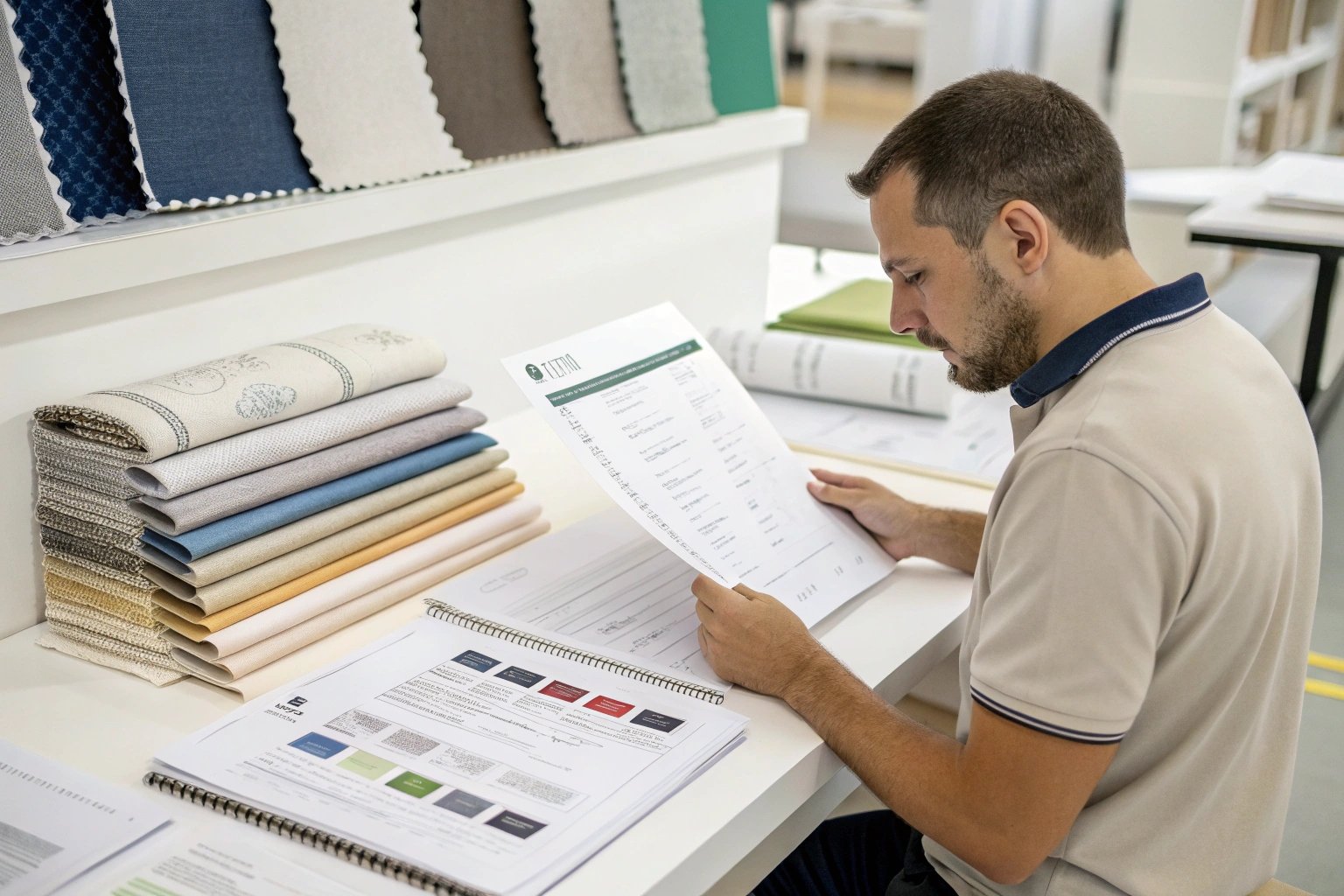In today’s eco-conscious textile landscape, the rise of recycled polyester (rPET) has reshaped sourcing strategies for fabric buyers worldwide. But with this boom comes a serious challenge—how do you verify that the recycled content in your fabrics is real, and not just clever marketing? I’ve seen many buyers burned by false “green” claims, especially when sourcing rPET from unfamiliar suppliers.
To verify recycled content in rPET fabrics, you must follow a multi-layered approach involving certification checks, supply chain traceability, third-party testing, and document audits. Each step minimizes the risk of greenwashing while protecting your brand and compliance status.
At Fumao Fabric, we work closely with certified recyclers, verified yarn spinners, and independent labs to ensure full transparency for our clients. This guide will walk you through the exact steps you need to take to verify recycled content claims across the global rPET supply chain.
What Certifications Are Valid for rPET Verification?
Certifications are the first checkpoint when validating rPET claims. They act as third-party validation that a product contains a verified amount of recycled polyester and has met environmental and social criteria.
The two most recognized certifications for rPET fabrics are GRS (Global Recycled Standard) and RCS (Recycled Claim Standard). Both offer traceability, volume tracking, and transparency across the supply chain.
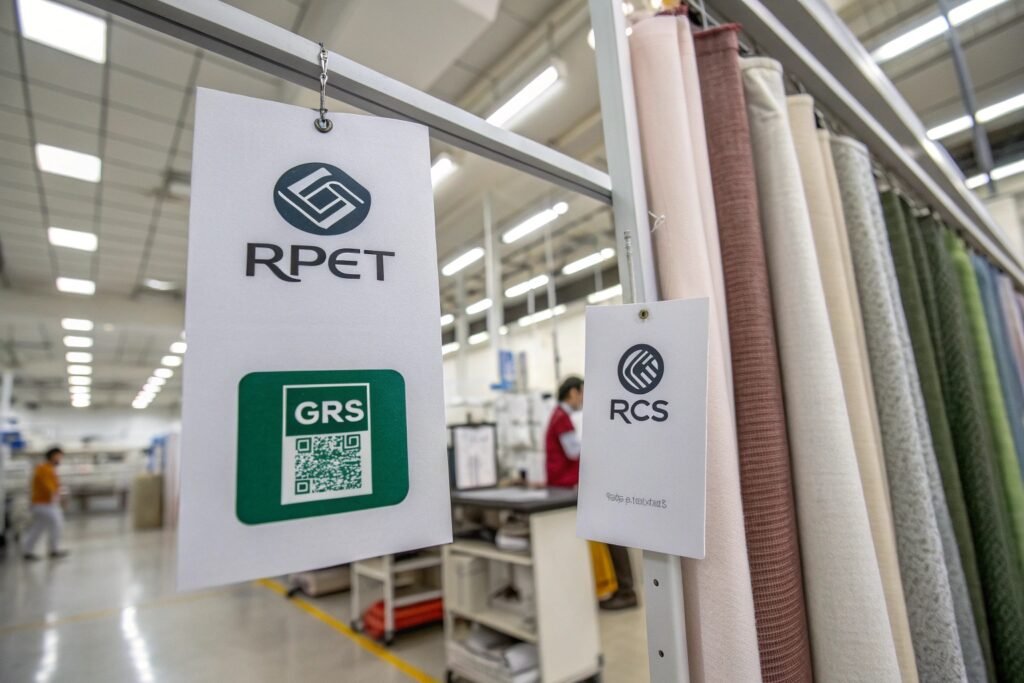
Why Is GRS Certification Considered the Gold Standard?
GRS, managed by Textile Exchange, is widely considered the most robust certification for recycled fibers. It verifies not only the recycled content but also social, environmental, and chemical practices during production. It requires suppliers to undergo annual audits and maintain detailed chain-of-custody documentation.
GRS-certified suppliers are listed on the Textile Exchange Database, which buyers can access to confirm certification status and scope.
How Does RCS Differ from GRS?
While RCS is also a standard managed by Textile Exchange, it only focuses on the material content, not the full ESG criteria. It’s suitable for buyers who want to verify recycled content but don’t need the full environmental and social compliance that GRS offers.
For small to mid-scale brands that are early in their sustainability journey, RCS can be a cost-effective way to start validating content without committing to the full GRS framework.
How to Trace the Origin of Recycled Polyester?
Tracing the origin of rPET means more than just looking at the final fabric. Buyers must map every stage: bottle collection, flake production, chip conversion, yarn extrusion, and weaving. Each step leaves a data trail.
Full traceability requires supplier declarations, invoice matching, batch-level documentation, and in some cases, digital blockchain systems.
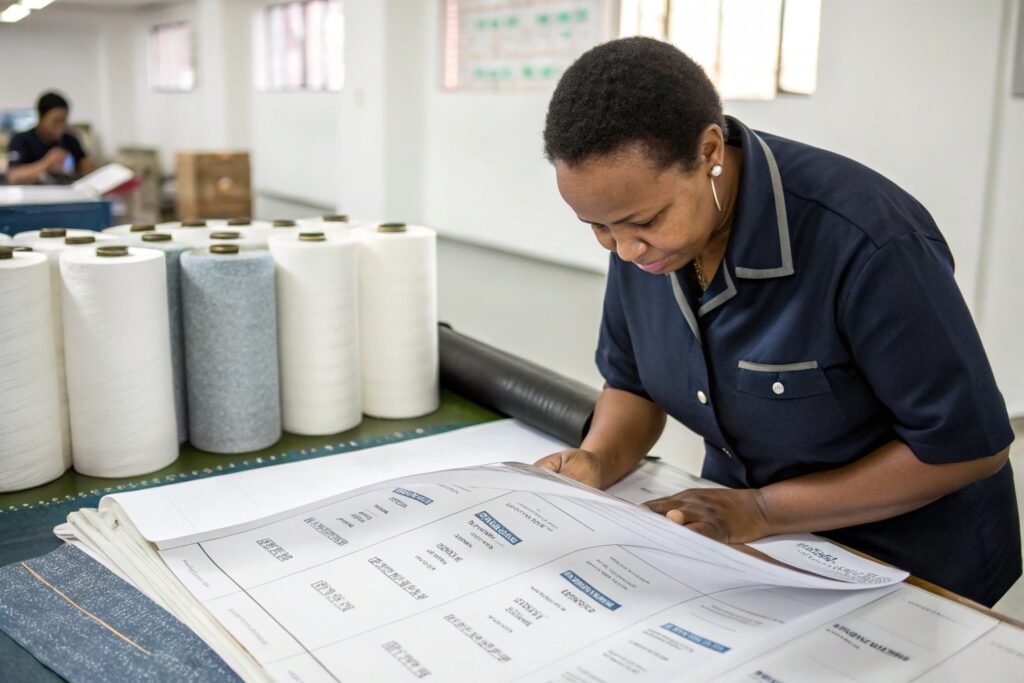
What Documents Prove the Origin of Recycled Content?
Key documents include bottle origin declarations, flake supplier invoices, material transfer records, and yarn production logs. These must be cross-verified through the supply chain. Some buyers use tools like TrusTrace or TextileGenesis to track data on each transformation point.
In our own practice at Fumao, we align fabric batches with yarn spinning dates and upstream chip batch IDs. This allows traceability from the plastic source to the woven fabric.
Are Blockchain Tools Reliable for rPET Verification?
Yes. Blockchain tools like TextileGenesis or IBM’s Trust Your Supplier help prevent data tampering and increase transparency. While adoption is still growing, many EU-based clients now request blockchain-backed proof-of-origin. These tools integrate directly with ERP systems and allow brands to see their rPET journey in near real time.
For brands targeting EU eco-labels or carbon disclosures, this level of traceability is becoming a requirement.
Can You Perform Independent Laboratory Testing?
Yes. While lab tests can’t always quantify exact recycled content, they can identify chemical and molecular markers that indicate the fabric is made from recycled sources.
Independent testing verifies fiber composition, chemical residue, and dye absorption—helping validate supplier claims or detect inconsistencies.
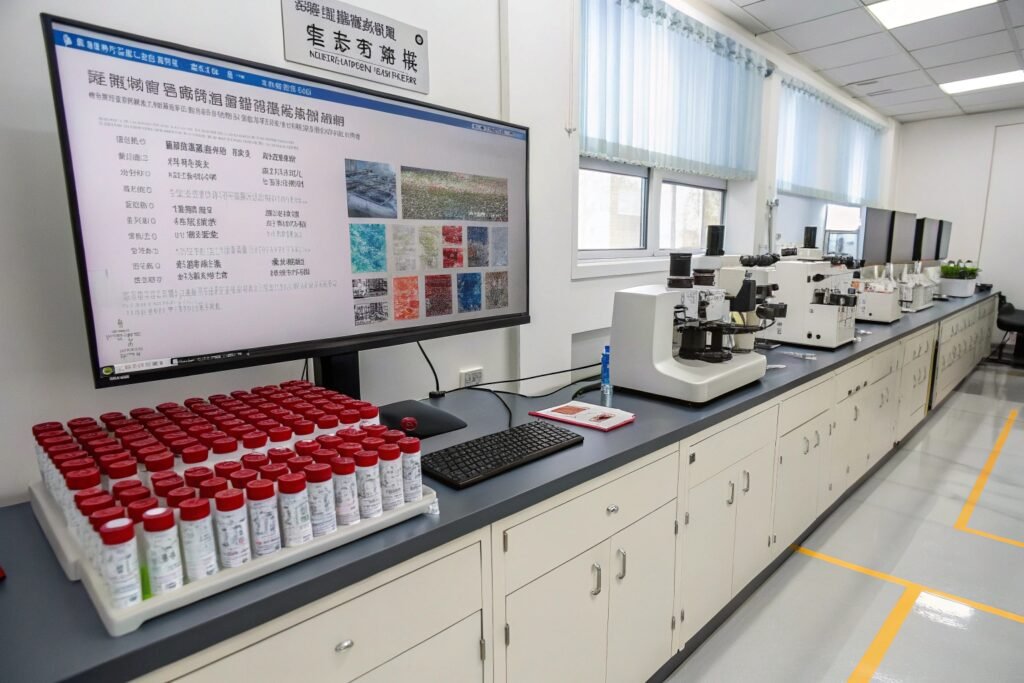
What Types of Lab Tests Are Commonly Used?
FTIR (Fourier Transform Infrared Spectroscopy) is one of the most reliable tests for distinguishing recycled from virgin PET. Other tests include:
- DSC (Differential Scanning Calorimetry)
- TGA (Thermogravimetric Analysis)
- Ash content and melt flow index comparisons
Labs like SGS and Intertek offer rPET validation testing, often required for brand audits or product compliance documentation.
When Should You Use Lab Testing?
Lab testing is essential when dealing with new or unverified suppliers, especially in high-risk regions. It’s also crucial if a shipment lacks proper GRS/RCS documentation or if visual or performance inconsistencies appear. For example, if recycled fabric absorbs dye differently, testing can reveal composition issues.
Brands importing under CBP scrutiny or REACH compliance in the EU often require third-party verification beyond just certificates.
How to Detect Greenwashing or Misleading Claims?
One of the biggest threats in the rPET space is greenwashing—claims that sound sustainable but lack verification. Words like “eco-friendly” or “sustainable fabric” mean nothing unless backed by data.
To avoid greenwashing, always request proof of content, audit supplier claims, and watch for red flags in pricing and certification.
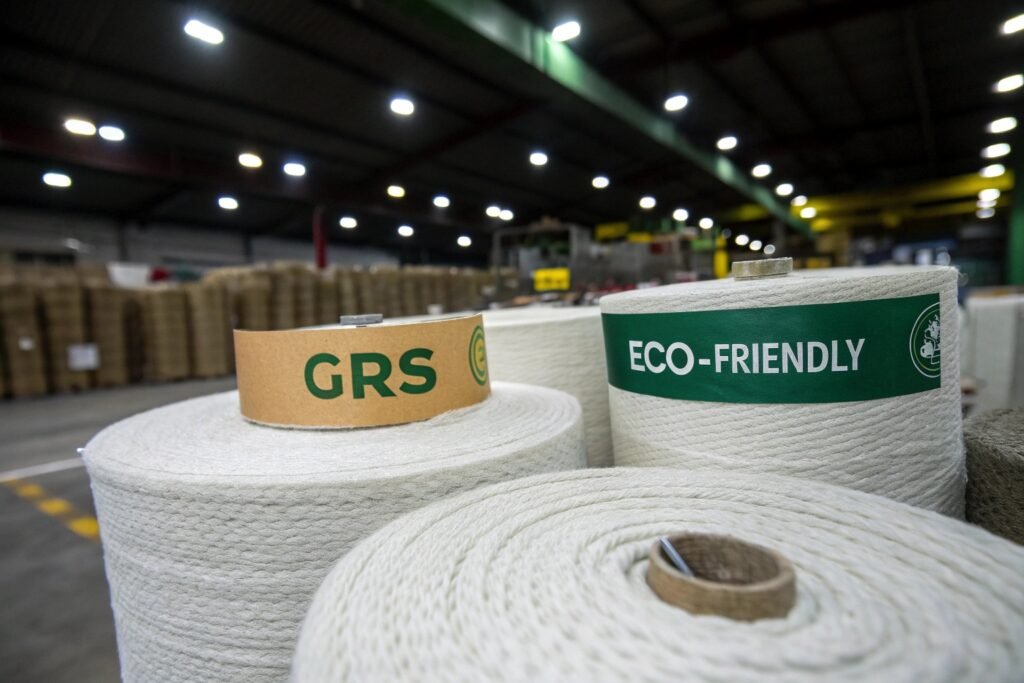
What Are the Most Common Red Flags?
- Suppliers refusing to share certificate serial numbers
- Suspiciously low prices for "100% GRS" rPET
- Certificates that don't match the supplier’s business name
- Claims of 100% post-consumer rPET without supporting evidence
These are signs that the recycled content may be overstated or fabricated. As a general rule, if the price is too good to be true, it probably is.
Resources like the GRS public database and OEKO-TEX STeP platform allow buyers to verify authenticity directly.
How Can You Audit a Supplier’s Claims?
Conduct a full vendor audit with focus on:
- Matching production capacity with declared rPET volumes
- Reviewing purchase invoices and raw material sources
- Interviewing floor managers and reviewing material handling procedures
You can hire audit firms or use tools like Higg Index to benchmark environmental performance across dyeing, weaving, and sourcing operations.
At Fumao, we undergo yearly third-party audits to validate both our rPET material handling and our partners’ input-output flows—ensuring what we promise is what our clients receive.
Conclusion
The demand for recycled polyester isn’t slowing down. But as buyers, we must match that demand with accountability. Verifying recycled content isn’t about trust alone—it’s about systems, evidence, and vigilance. From certification to traceability, lab testing to audits, you now have the tools to build a secure rPET sourcing program. At Fumao Fabric, we’re proud to back every claim we make with proof—because your sustainability strategy deserves nothing less.

